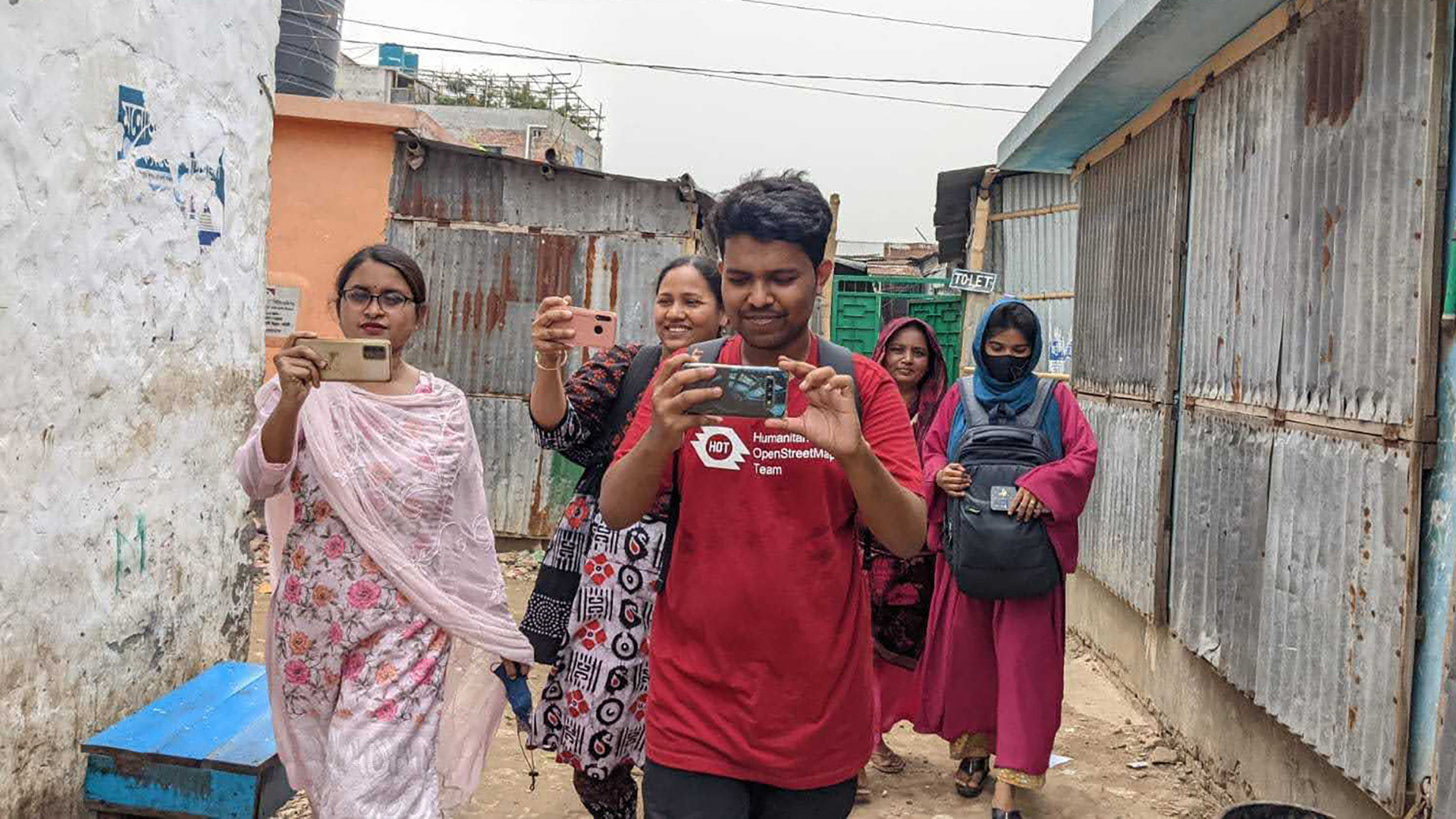Mapping for Climate Ready Cities - Dhaka Thrive
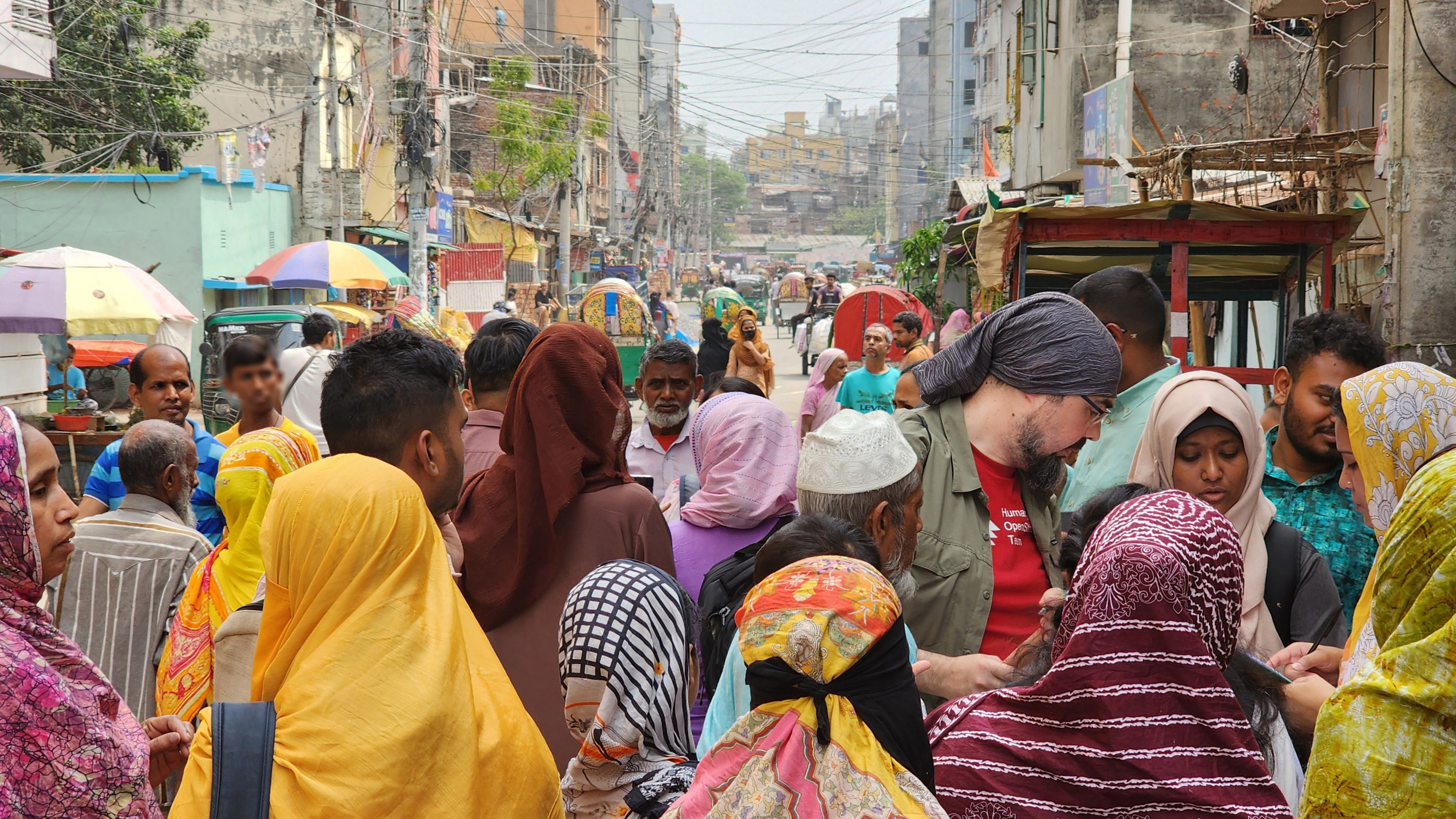
Through our Mapping for Climate Ready Cities program, HOT is supporting the development of a thriving ecosystem focused on the creation, interpretation, and use of maps to respond to and reduce climate risks in urban areas across four priority regions. This project page highlights our work in Dhaka, Bangladesh through HOT's Open Mapping Hub - Asia Pacific.
Climate Vulnerabilities in Dhaka
Dhaka is one of the fastest-growing megacities in the world. With rapid urbanization and growing migration, Dhaka confronts unique challenges in population density and the rapid expansion of informal settlements, resulting in makeshift communities and poor urban planning.
These areas are highly vulnerable to climate hazards like urban flooding, fires, disease outbreaks, and urban heatwaves. This is further compounded by poor housing and limited access to healthcare, WASH (water, sanitation, and hygiene), and waste management.
About Dhaka Thrive
To address these complex urban issues, Open Mapping Hub - Asia Pacific (AP Hub) partnered with World Vision Bangladesh to launch Dhaka Thrive—an initiative focused on improving access and availability of open geospatial data in Dhaka’s informal settlements.
Implemented in 2024, the project centered on Mirpur, a densely populated area in North Dhaka with a high number of informal settlements and climate migrants.
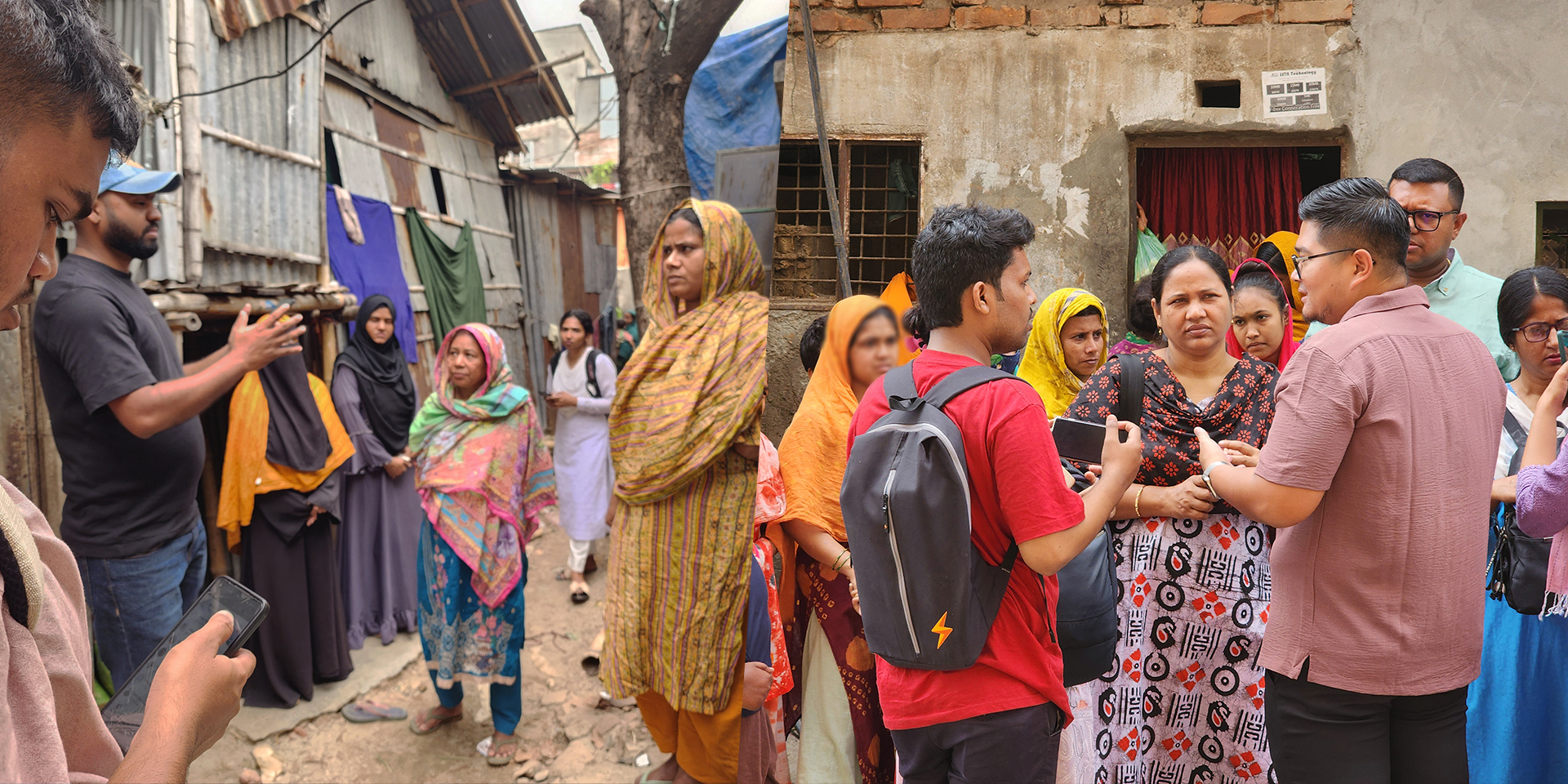
By mapping critical features and establishing a comprehensive geospatial data, Dhaka Thrive provides deeper insights into the community’s needs and challenges, including climate risks and vulnerabilities, access to basic amenities, and patterns of settlement.
These insights enable governments, NGOs, humanitarian organizations, policymakers, and communities to make informed decisions, helping improve lives and address the urban challenges in Mirpur. They will also serve as a necessary foundation for better, more systematic urban planning in the future.
Our Mapping Approach
The project addressed data gaps with partners, local communities, and stakeholders through remote mapping and validation. This was followed by field data collection and mapping campaigns focused on the most vulnerable informal settlements.
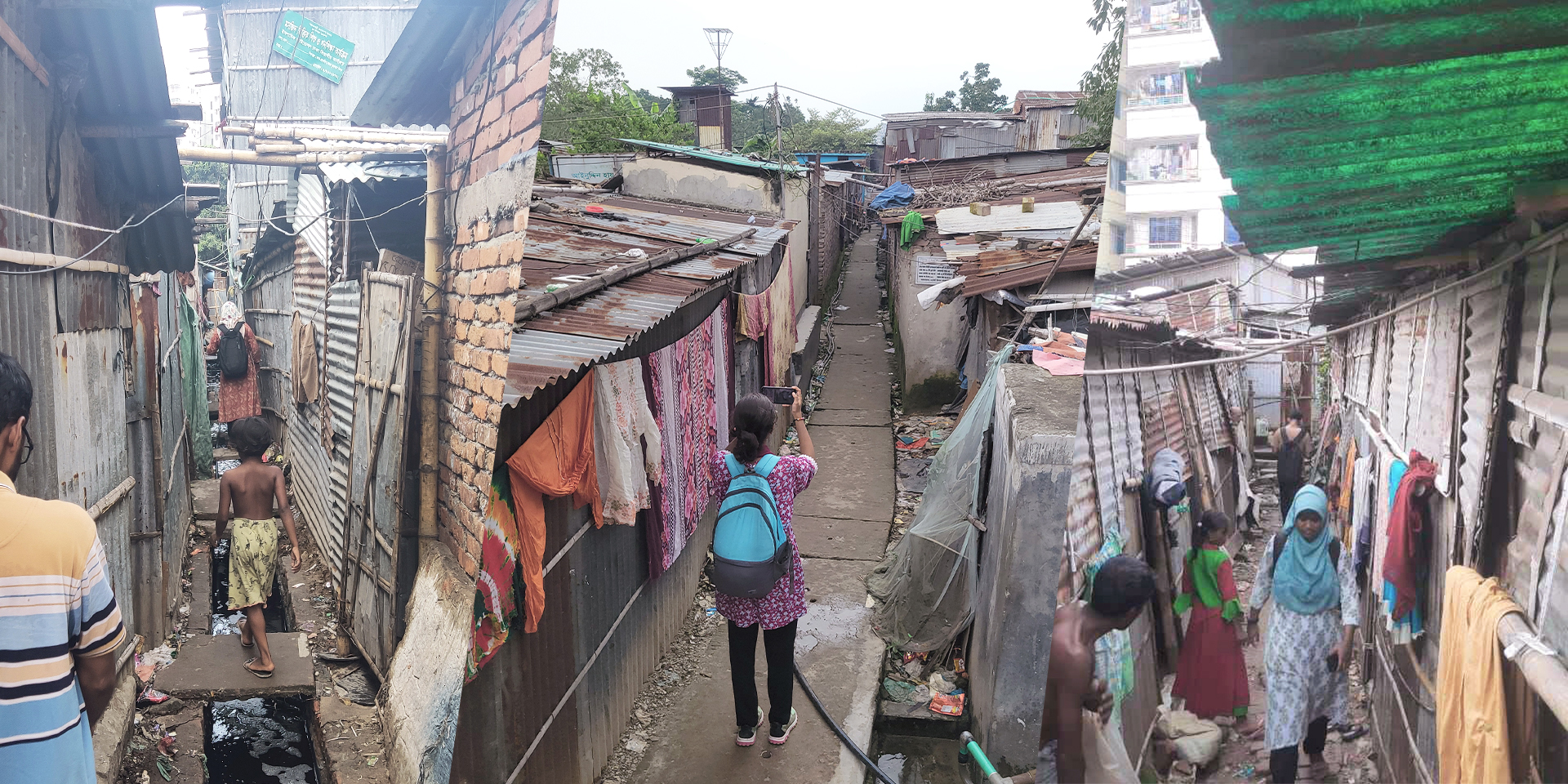
At the field, in addition to collecting data, the teams actively engaged with community members to raise awareness about Dhaka Thrive, ensuring they are informed on how open data can benefit their communities.
The initiative also explored local data sources such as public datasets. The data collection and awareness-building efforts will then be supported by stakeholder training, workshops, and upskilling efforts focusing on data collection and data use for decision-making.
Outcome and Impact
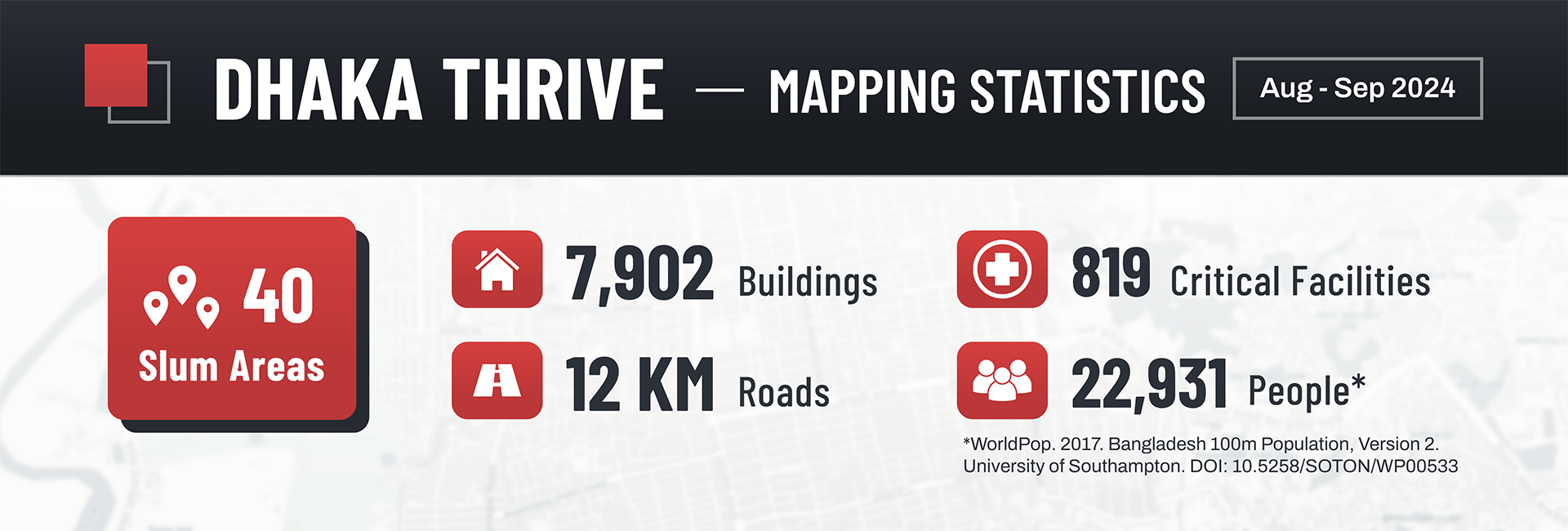
Here’s what Dhaka Thrive accomplished during its 2024 pilot phase:
- Mapped and validated critical urban infrastructure, including buildings, roads, and basic amenities.
- Developed a multi-hazard vulnerability assessment by integrating community-led data with remote sensing, enabling comprehensive understanding of local risks.
- Provided data-driven insights for policymakers and humanitarian organizations to design targeted resilience interventions.
Explore the Dhaka Thrive Dashboard
Dive into the project’s data through our interactive dashboard.
The dashboard showcases three primary datasets:
- Hazard points and layers – Areas with high climate hazard risks, including flood, dengue hotspots, and fire
- Critical lifeline facilities – Community centers, healthcare, educational institutions, places of worship, water, WASH, and waste management
- Slum boundaries – Detailed statistics for each 40 settlements, with a link to access the street-level imagery via Mapillary
Built using the open-source uMap tool, the strength of the Dhaka Thrive Dashboard lies in its seamless integration with OpenStreetMap (OSM). This allows data synchronization and real-time updates whenever local stakeholders contribute to or update data on OSM.
Learn more about the dashboard through this infographic.
Putting Underrepresented Communities on the Map
Through data collection and local engagement, Dhaka Thrive enriched existing maps of Mirpur’s informal settlements—areas that previously lacked detailed, up-to-date geospatial information. When communities are represented on the map, their needs and challenges become more visible, allowing more resource planning and inclusive decision-making.
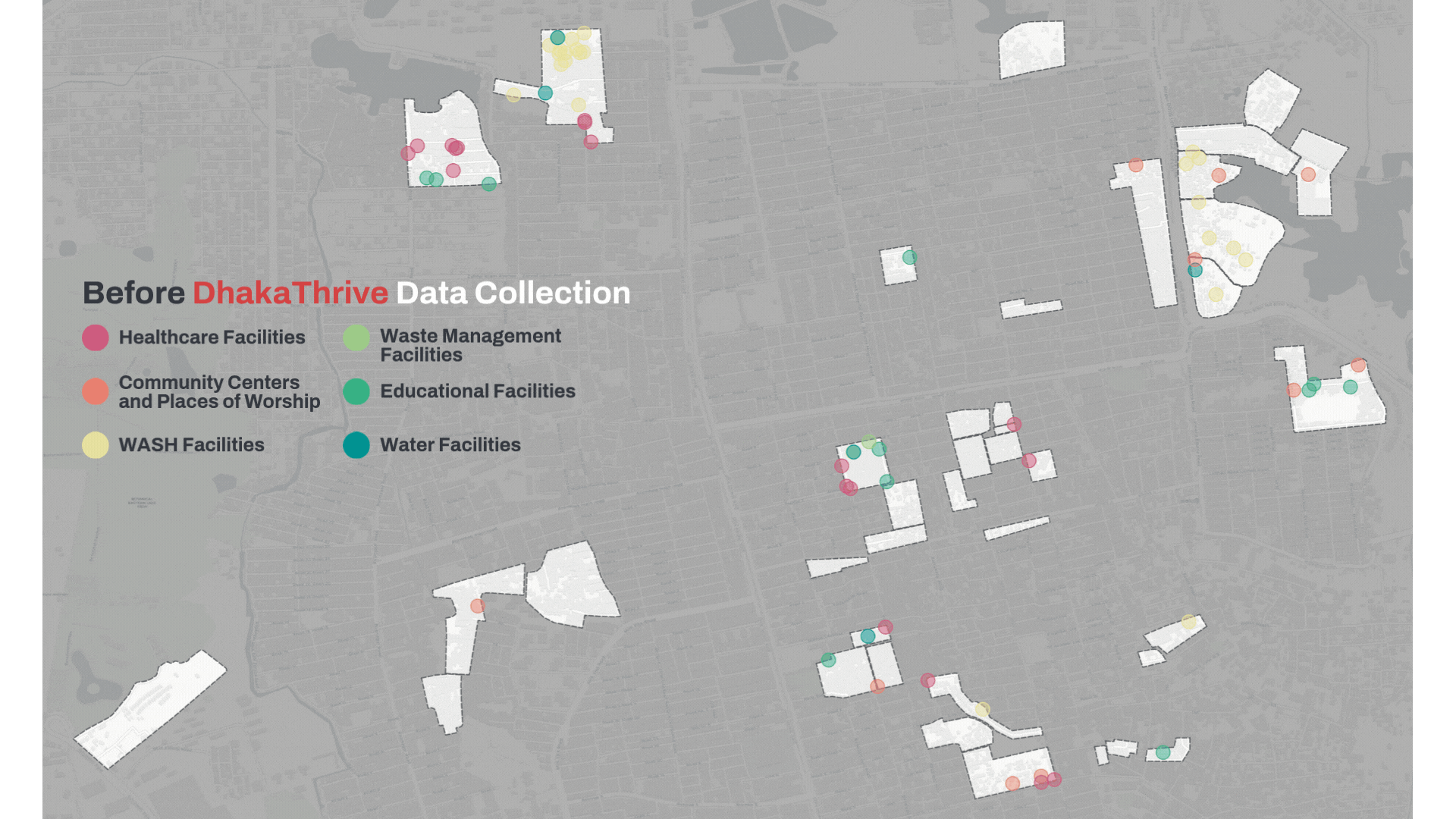
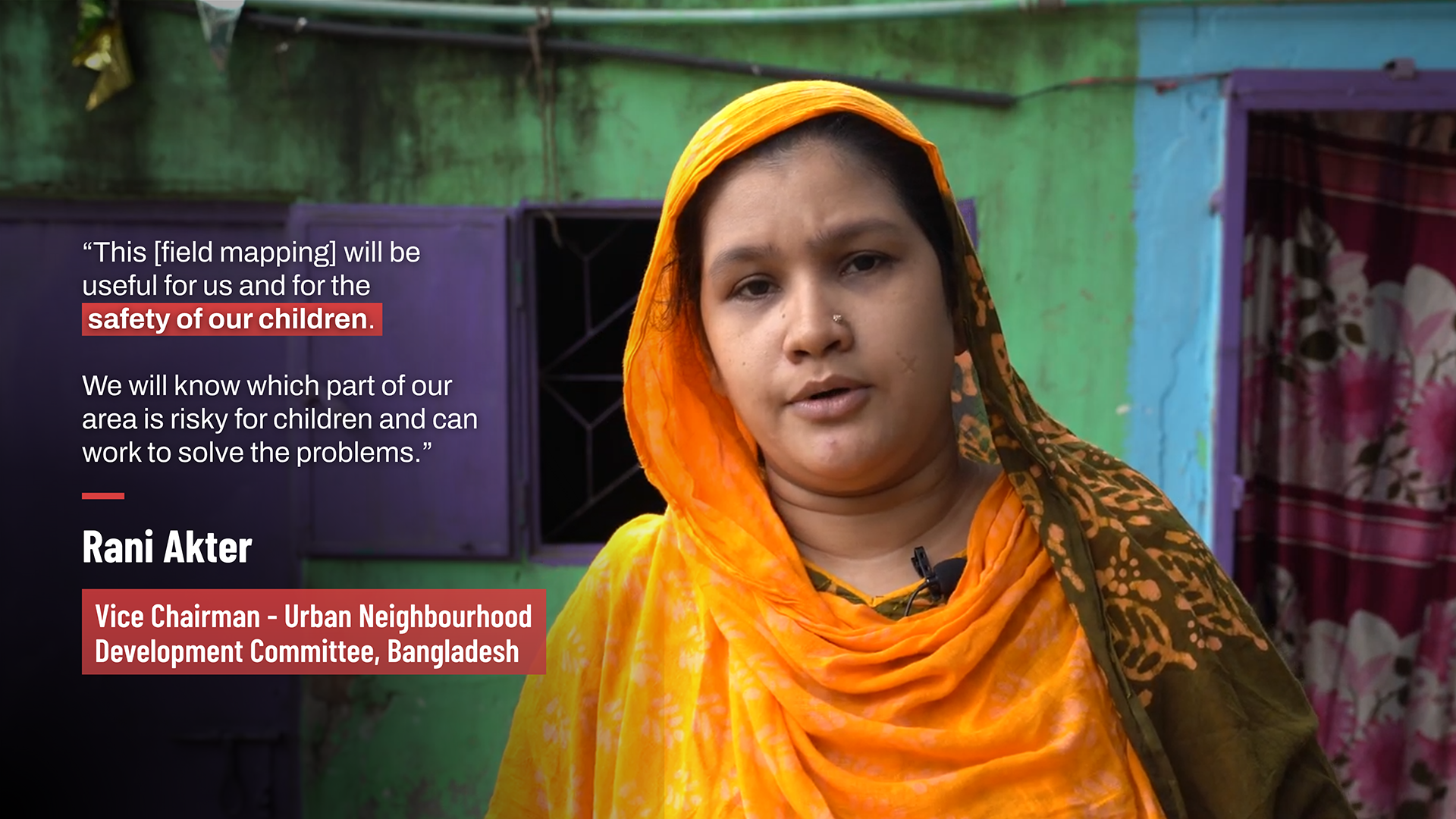
Additionally, the project empowered local youth by equipping them with digital skills in mapping and data analysis through direct involvement in data collection. This approach not only promoted sustainability but also contributed to the Bangladesh government’s vision of building a digital nation.
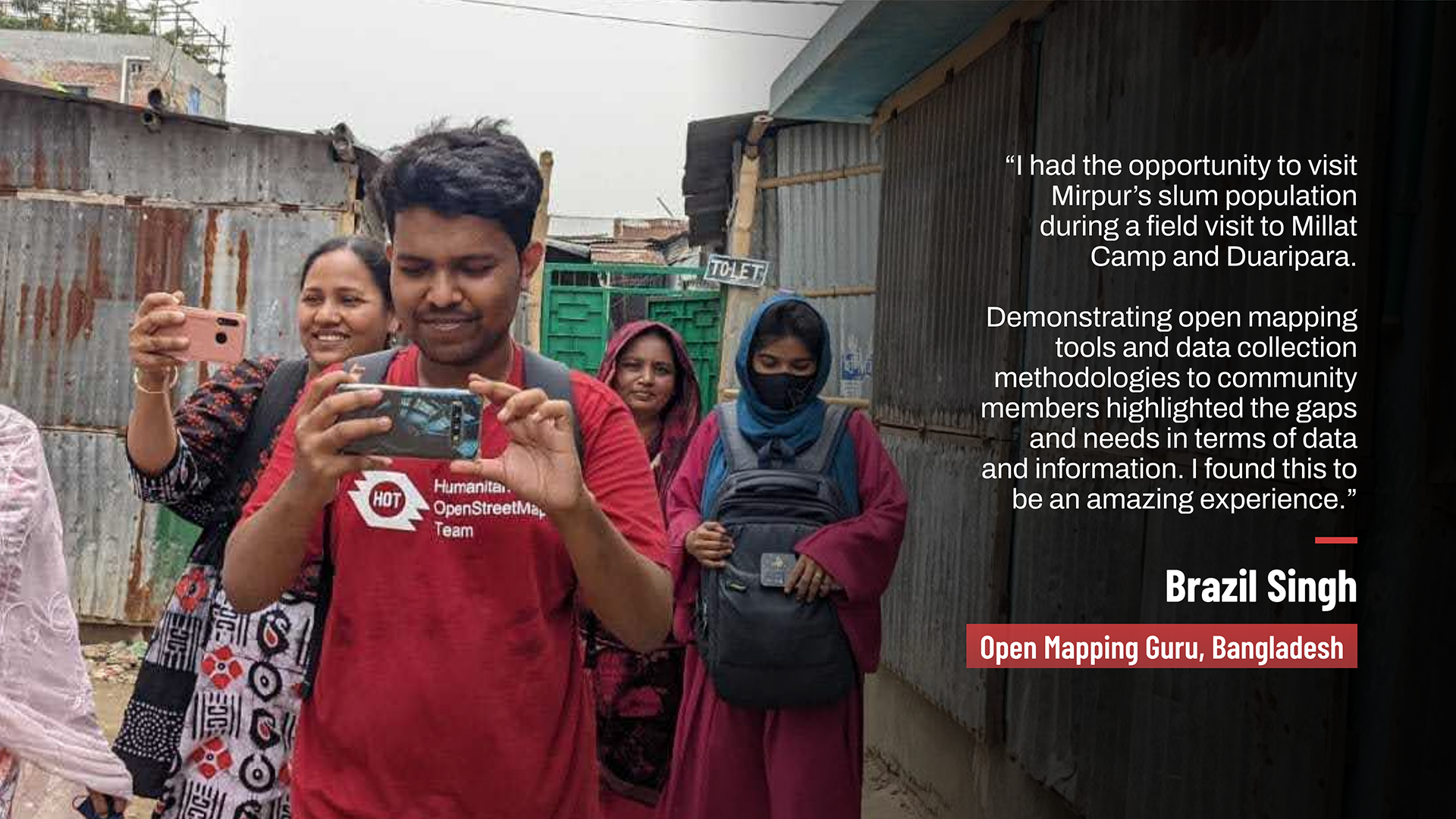
Key Takeaways
The Dhaka Thrive Project exemplifies the power of open geospatial data in addressing climate change and urban challenges. By combining locally-led open data generation with data-driven insights, it is laying the groundwork for climate-resilient cities.
Having a centralized platform like the Dhaka Thrive Dashboard that any stakeholder can update is crucial to ensure that data is updated and reliable. This will create greater opportunities for data to be used effectively, contributing to meaningful and sustainable impact for all.
As Dhaka Thrive moves forward, the focus on empowering communities and decision-makers will drive sustainable urban development and improved living conditions for communities vulnerable to climate change, creating a lasting framework for stronger local urban resilience.
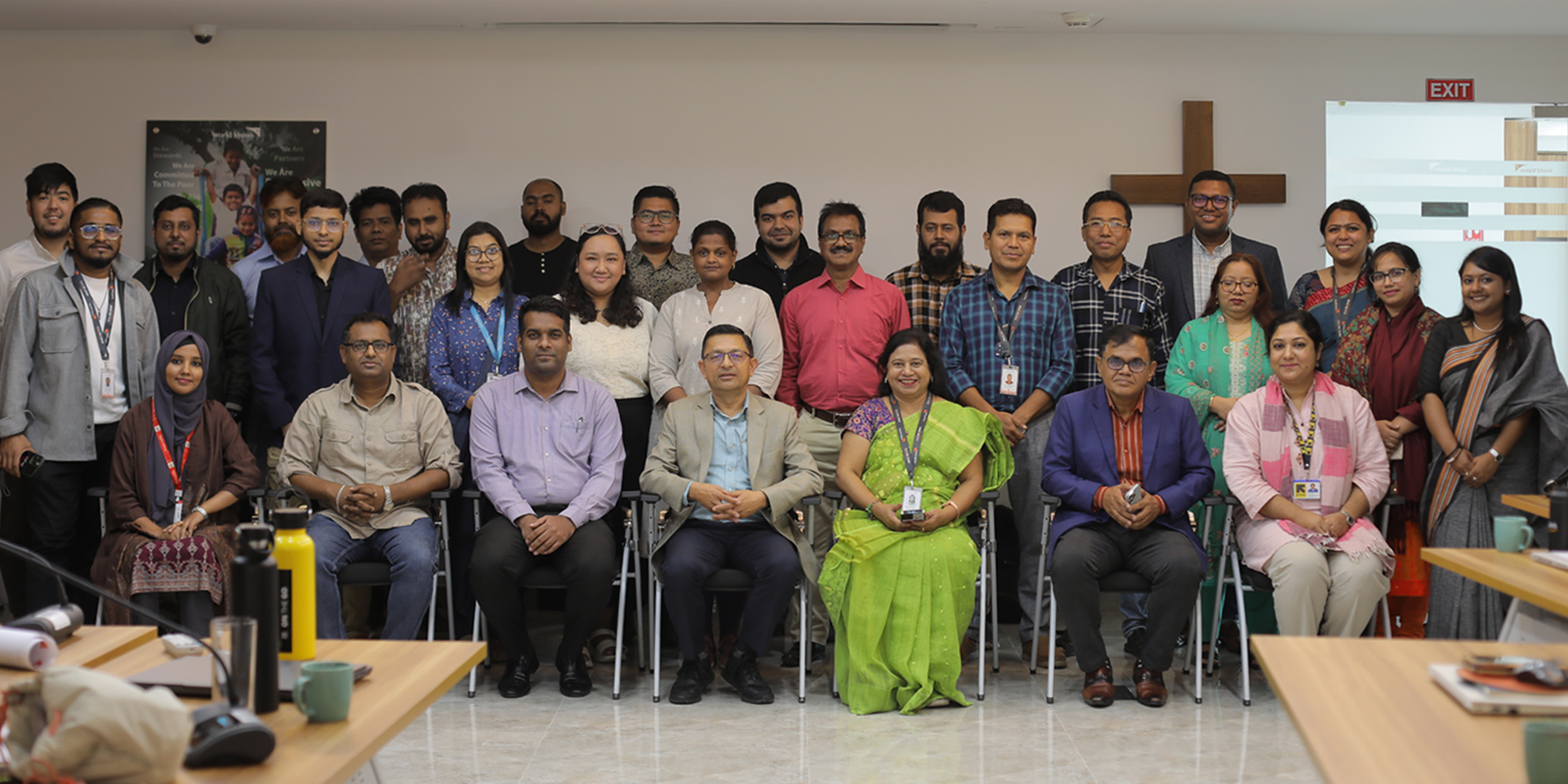
Next Steps
Building upon the work during this pilot phase, the team will collaborate with local stakeholders to evaluate findings and refine the project methodology to develop a tailored end-to-end model suited to Dhaka’s context. This involves:
- Sharing generated actionable insights with stakeholders through dissemination workshops and training on how to effectively use the data. These sessions will also serve as a platform to refine insights and explore opportunities to scale the project.
- Promoting continued data use and contribution.
- Enhancing community participation.
To learn more about the next phase of the project, starting in January 2025, visit the Dhaka Thrive - Data-Driven Insights for Climate Resilience and Urban Development page.
More from Dhaka Thrive: Stories, Videos, and Resources
1) Video - Data Collection and Community Story in Mirpur & Stakeholder Dissemination Workshop
2) Read our feature article in the Global Climate Watch.
3) Read and download our project report.
4) Explore photos from the project here.
Cover photo credit: Honey Fombuena / Open Mapping Hub - Asia Pacific
Recent news from Mapping for Climate Ready Cities - Dhaka Thrive (View all news)
Mapping for Equity: Voices from Dhaka’s Informal Settlements
Discover how community-led open mapping is transforming lives in Dhaka’s informal settlements. Brazil Singh shares powerful insights from the Dhaka Thrive Project, where data becomes a tool for justice, resilience, and local enhancement.
Mapping Dhaka’s Informal Settlements for Climate Resilience and Urban Development
Discover how the Dhaka Thrive Project is working with local stakeholders to collect open geospatial data to address rapid urbanization, climate change, and public health challenges in Dhaka's informal settlements.


